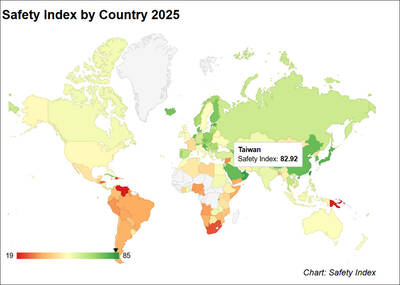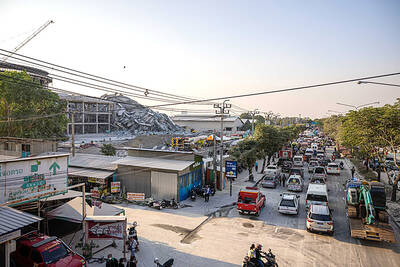I think of many things when I think of Proton, Malaysia's national car manufacturer. Shifts in global economic trends, business, or diplomacy are not, I confess, among them. But now I have to wonder.
You may not have even noticed the news. Kim Yong-nam, president of North Korea's Supreme People's Assembly and for many years Pyongyang's official shaker of foreign hands, toured the Proton production plant in Shah Alam, a provincial city south of Kuala Lumpur, and talked about the prospects for a joint venture manufacturing facility up where he lives.
With a retinue of 30 North Korean officials tailing him, Kim also visited Thailand, where he negotiated barter deals with Prime Minister Thaksin Shinawatra. Then it was on to Britain and various continental capitals.
Small beer, surely. Kim's Malaysian tour can't account for the extraordinary rise of late in the share price of Perusahaan Otomobil Nasional, as Proton is officially known. That must be attributed to favorable currency movements, a rosy earnings outlook, and talk of a foreign equity stake -- no, not North Korean. The stock closed Friday in Kuala Lumpur at 11 ringgit, unchanged on the day and up 42 percent this year.
"Building a car in North Korea -- they've been dreaming of that for a long time," says Bradley Martin, a correspondent colleague for many years and a North Korea specialist now at Dartmouth College. "But you put a car plant where people can buy cars, and there's no way North Koreans can buy cars in any number."
Fair enough, as things stand. Such initiatives as these have come to nothing before -- nothing except a US$12 billion foreign debt for Pyongyang.
But things change. Follow the recent travels of North Korean leader Kim Jong-il -- remember his visit to the Buick plant in Shanghai last year? -- and it seems evident that reforms of some kind, and at some point, are on his mind.
Malaysian officials are keen on the idea of a Proton plant in North Korea. In Thailand, a deal to exchange rice for North Korean minerals and machinery seems to be moving through the bureaucracies on both sides.
We will have to wait and see about all this, as Martin urges.
All the same, I see a larger dynamic at work here, and it has to do with the context of these contacts. It is a little more than a month since the Bush administration put North Korea on its "axis of evil" list. In a dramatic reversal of past policy, Bush is now preparing to confront North Korea over its refusal to let American inspectors see its nuclear facilities.
This tells us something -- and asks us something, too.
However strenuously Americans may now try to redefine the planet in with-us-or-with-them terms, regional cooperation and integration on the economic level is the more powerful impulse.
This is true whether or not a Proton ever rolls by a statue of Kim Il-sung on that eerie-looking main drag in Pyongyang.
Asian solutions to Asian problems. I approve, even as I wonder what they may be thinking at General Motors Corp -- which makes no secret of its interest in Korean consumers -- as to the peculiar nexus of politics and investment one finds in Asia.
The question Proton implicitly poses is this: What is the wise course with the North Koreans? On the one hand there is the "sunshine policy" of South Korean President Kim Dae-jung -- the use of commercial and diplomatic engagement to draw North Korea out of its isolation. Americans are no strangers to this strategy -- when it suits them.
On the other hand, there is the Cold War-ish standoff the Bush administration has doggedly reconstructed since coming to power just over a year ago.
I know where I stand along this line of inquiry, and I don't feel particularly lonely. I'd rather see a Proton plant in North Korea than some American spook pretending to be an impartial inspector. The one may be impractical at present, but the other will be unproductive -- perhaps purposefully.
The Europeans have now told the North Koreans to start reforming their economy and shape up on the human-rights side if they want more aid. This is just the kind of leverage that's needed, but let's not forget what makes it possible: Less than a year ago the EU took the sensible decision to recognize North Korea -- pointedly, I thought at the time, in the face of Washington's revived hostility.
It has been a long and winding road for Proton, I must say. I recall visiting the Shah Alam plant just before it opened in the late 1980s. The notion of a Malaysian car looked like a hopeless folly at the time. The first Proton Saga came off the line with a subsidy of 20 percent or more, by most analysts' reckoning. Capacity utilization was dismal, and export markets were an embarrassing fantasy.
Now Proton is making a credible bid to become a regional player in the economy end of the market -- and may climb upscale in due course. In January it bought a 49 percent interest in Gold Star Heavy Industry, a Chinese parts maker, which will reduce its dependence upon expensive components shipped from Japan by Mitsubishi Motors Corp, the original source of Proton's technology and a 16 percent partner in the company.
After years of debt and losses, Proton's reserves are healthy, and net earnings, at 300 million ringgit (US$79 million) for the year that ended last March 31, are forecast to rise substantially in 2002. A sizable export market will open up with the creation of a free-trade zone in Southeast Asia -- as will competition at home, it must be added.
A regional player -- I never would have imagined it. Now this may become true in more ways than one. Life is long, one must conclude, and distant horizons eventually draw near. I can't imagine a Proton car plant in North Korea, but that doesn't seem to be the measure of anything.

ENDEAVOR MANTA: The ship is programmed to automatically return to its designated home port and would self-destruct if seized by another party The Endeavor Manta, Taiwan’s first military-specification uncrewed surface vehicle (USV) tailor-made to operate in the Taiwan Strait in a bid to bolster the nation’s asymmetric combat capabilities made its first appearance at Kaohsiung’s Singda Harbor yesterday. Taking inspiration from Ukraine’s navy, which is using USVs to force Russia’s Black Sea fleet to take shelter within its own ports, CSBC Taiwan (台灣國際造船) established a research and development unit on USVs last year, CSBC chairman Huang Cheng-hung (黃正弘) said. With the exception of the satellite guidance system and the outboard motors — which were purchased from foreign companies that were not affiliated with Chinese-funded

PERMIT REVOKED: The influencer at a news conference said the National Immigration Agency was infringing on human rights and persecuting Chinese spouses Chinese influencer “Yaya in Taiwan” (亞亞在台灣) yesterday evening voluntarily left Taiwan, despite saying yesterday morning that she had “no intention” of leaving after her residence permit was revoked over her comments on Taiwan being “unified” with China by military force. The Ministry of the Interior yesterday had said that it could forcibly deport the influencer at midnight, but was considering taking a more flexible approach and beginning procedures this morning. The influencer, whose given name is Liu Zhenya (劉振亞), departed on a 8:45pm flight from Taipei International Airport (Songshan airport) to Fuzhou, China. Liu held a news conference at the airport at 7pm,

Taiwan was ranked the fourth-safest country in the world with a score of 82.9, trailing only Andorra, the United Arab Emirates and Qatar in Numbeo’s Safety Index by Country report. Taiwan’s score improved by 0.1 points compared with last year’s mid-year report, which had Taiwan fourth with a score of 82.8. However, both scores were lower than in last year’s first review, when Taiwan scored 83.3, and are a long way from when Taiwan was named the second-safest country in the world in 2021, scoring 84.8. Taiwan ranked higher than Singapore in ninth with a score of 77.4 and Japan in 10th with

GRIDLOCK: The National Fire Agency’s Special Search and Rescue team is on standby to travel to the countries to help out with the rescue effort A powerful earthquake rocked Myanmar and neighboring Thailand yesterday, killing at least three people in Bangkok and burying dozens when a high-rise building under construction collapsed. Footage shared on social media from Myanmar’s second-largest city showed widespread destruction, raising fears that many were trapped under the rubble or killed. The magnitude 7.7 earthquake, with an epicenter near Mandalay in Myanmar, struck at midday and was followed by a strong magnitude 6.4 aftershock. The extent of death, injury and destruction — especially in Myanmar, which is embroiled in a civil war and where information is tightly controlled at the best of times —